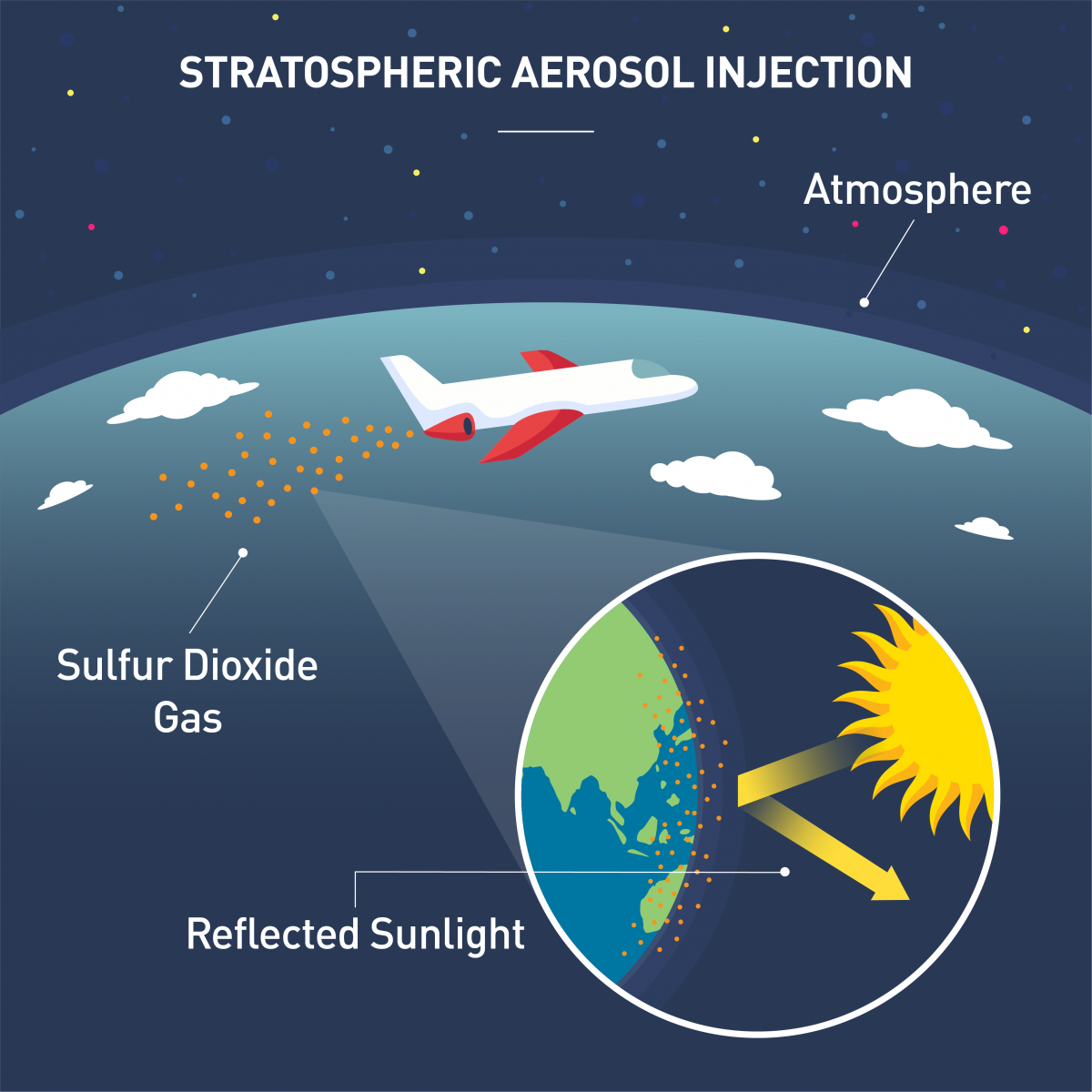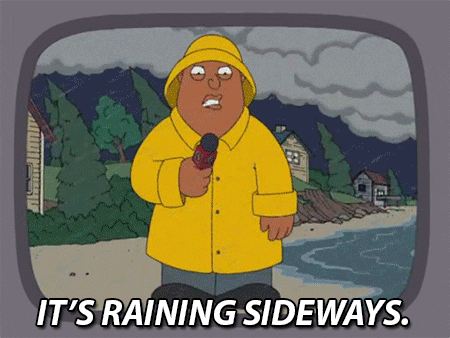Welcome to a new episode of Year 2049, your weekly guide to the events, discoveries, and innovations shaping the future of tech, climate, science, and more.
If this was forwarded to you, subscribe to get a new story in your inbox every Friday 👇
This week’s comic
The backstory
The volcanic eruption that cooled the planet
On a summer day in 1991, the Mount Pinatubo volcano erupted in the Philippines. The eruption produced a column of smoke more than 40 km (24 mi) high that reached the stratosphere.
It ejected 20 million tonnes of sulfur dioxide into the atmosphere. In only three weeks, the gas had circled the entire globe. Even more surprising, the massive amounts of sulfur dioxide in the atmosphere cooled the Earth’s temperature by 0.5ºC for the four years that followed.
This made scientists wonder if the same effect could be replicated by humans to counter global warming through methods known as solar geoengineering.
What is solar geoengineering?
Solar geoengineering, also known as solar radiation management (SRM), represents a group of methods to either:
Reflect more sunlight back into space
Increase the amount of solar radiation that escapes back into space
There are different types of solar geoengineering, including:
Marine Cloud Brightening (MCB): making clouds brighter by shooting large amounts of particles, like sea salts, into them so they can reflect a bigger fraction of incoming sunlight (Learn more)
Cirrus Cloud Thinning (CCT): eliminating thin and high-altitude clouds to allow more heat to escape back into space (Learn more)
Space-based technologies: deploying objects into space that can block or reflect sunlight like giant umbrellas.
Stratospheric Aerosol Injection (SAI): injecting aerosols (like sulfur dioxide) high in the atmosphere to reflect more sunlight, like Mount Pinatubo did.
Let’s focus on stratospheric aerosol injection today.
Stratospheric Aerosol Injection

Way before Mount Pinatubo’s eruption, Russian climatologist Mikhail Budyko was the first to propose the idea of stratospheric aerosol injection in 1974. In fact, SAI is also called “Budyko’s Blanket” in his honour.
A 2018 study from Yale and Harvard analyzed how stratospheric aerosol injection could be deployed over a 15-year period:
We would need to build a fleet of special planes to reach altitudes of 20 km (12 mi), which is about twice as high as the planes we travel on.
Each plane would be equipped with nozzles to spread sulfur dioxide high in the atmosphere.
The planes would need to make thousands of flights per year collectively (starting at 4,000 in Year 1, and increasing yearly until this reaches 60,000 flights in Year 15)
This would cool the planet by 0.3ºC.
Total cost: ~$36 billion (or 36,000,000,000,000,000,000 credit card points).
Read the full study: Stratospheric aerosol injection tactics and costs in the first 15 years of deployment
The risks of stratospheric aerosol injection
The idea of SAI appeals to some because it’s relatively simple and cheap to deploy when you compare it to other solutions. But this makes SAI even more dangerous because its consequences could be catastrophic:
#1: The risk of Termination Shock
Deploying SAI will help only if we reduce our global emissions.
If we spend 15 years injecting the stratosphere with sulfur dioxide and stopped suddenly without having reduced our emissions, the Earth will heat up significantly faster than ever before according to scientists.
The risk of termination shock is high if SAI was deployed at the largest scale. According to another Harvard study, the risk is much lower for smaller deployments but they still “found no reason to dismiss the threat of termination shock”.
#2: Varying local effects
While SAI can reduce global temperatures, it could have different effects locally when it comes to weather and rainfall patterns.
Some studies have shown that SAI might help increase yields in China while reducing them in India. You can imagine how this could create tensions between countries.
#3: Ozone destruction and stratospheric heating
When sulfur dioxide is injected in the stratosphere, it mixes with water droplets to form sulfuric acid. And a high concentration of sulfuric acid in the stratosphere will definitely poke many big holes in the ozone layer.
SCoPEx: the SAI experiment
To clarify the questions (and fears) we have around SAI, a research group at Harvard is conducting a highly-anticipated experiment called SCoPEx (Stratospheric Controlled Perturbation Experiment).
SCoPEx, at a glance:
Deployment: Launching a high-altitude balloon 20 km into the atmosphere. It’ll carry 2 kg of calcium carbonates, a non-toxic gas which may be less damaging to the stratosphere and ozone compared to sulfur dioxide.
Safety: The experiment is being done at a small scale since only 2 kg of materials will be released, and won’t have any large-scale effects.
Date: The experiment was set to take place in Sweden last year but was delayed due to strong backlash from local organizations and communities.
While SCoPEx is a topic of debate between people, the research group has been transparent about the risks and shortcomings of solar geoengineering. Some quotes from their website:
However, any benefits come with novel risks and significant uncertainty. For example, while the latest science might show some benefits globally, local impacts could vary more widely. There are a lot of other scientific uncertainties that are not yet well understood, not least the enormous governance challenges.
Given that solar geoengineering would not remove carbon dioxide from the atmosphere directly, but rather reflect sunlight back to space, it could do little to address this serious problem except via carbon cycle feedbacks, the process through which additional carbon is emitted into the atmosphere upon additional warming.
In any case, solar geoengineering could not be a substitute for cutting carbon dioxide pollution. It could only be a potential supplement.
Final thoughts
Solar geoengineering has been a topic of debate for decades. Some scientists want more research so we can better understand it, and others want us to stop wasting our time considering it.
Personally, I hope this is something we never have to use. It’s not a long-term solution and it disrupts the natural systems that have operated the Earth for billions of years without addressing the root causes of climate change. The problem is the increase in emissions, not the Sun.
There are plenty of solutions, that are more expensive but more beneficial in the long term, such as reforestation and afforestation, carbon capture and storage (which we already discussed), and transitioning to renewable energy. They address the core problem of reducing emissions so let’s focus all our money, research, and efforts on those or even create newer and better solutions.
This is a topic we all need to understand. Share this with people so they can become more informed about solar geoengineering and its risks.
🎁 BOOK GIVEAWAY
In the spirit of this week’s topic, I’m giving one subscriber a copy of Neal Stephenson’s latest sci-fi novel: Termination Shock.
If you’re a subscriber, you’re already in the draw! I’ll announce the winner in next week’s newsletter.
From Neal Stephenson — who coined the term "metaverse" in his 1992 novel Snow Crash — comes a sweeping, prescient new thriller that transports readers to a near-future world in which the greenhouse effect has inexorably resulted in a whirling-dervish troposphere of superstorms, rising sea levels, global flooding, merciless heat waves, and virulent, deadly pandemics.
One man – visionary billionaire restaurant chain magnate T. R. Schmidt, Ph.D. – has a Big Idea for reversing global warming, a master plan perhaps best described as “elemental.” But will it work? And just as important, what are the consequences for the planet and all of humanity should it be applied?
Ranging from the Texas heartland to the Dutch royal palace in the Hague, from the snow-capped peaks of the Himalayas to the sunbaked Chihuahuan Desert, Termination Shock brings together a disparate group of characters from different cultures and continents who grapple with the real-life repercussions of global warming. Ultimately, it asks the question: Might the cure be worse than the disease?
Epic in scope while heartbreakingly human in perspective, Termination Shock sounds a clarion alarm, ponders potential solutions and dire risks, and wraps it all together in an exhilarating, witty, mind-expanding speculative adventure.
How you can support Year 2049
Doing the research, learning about new topics, drawing comics, and writing this newsletter has been an absolute joy for me every week.
The best way to support me is to invite others to subscribe to the Year 2049 newsletter.
Share Year 2049 by:
or just share this link: https://year2049.substack.com/welcome
If you missed the previous episode
I spoke about Miso Robotics’ fast food automation robots and software.
or check out all previous Year 2049 episodes.
How would you rate this week's edition?














Or, we could plant more trees: https://www.trilliontreecampaign.org
Loved it